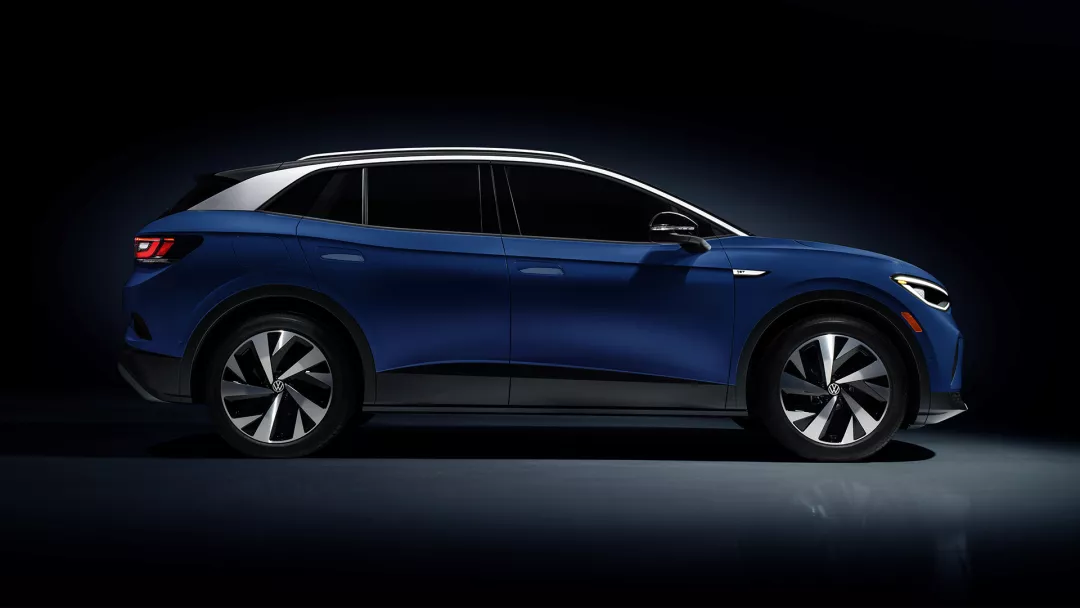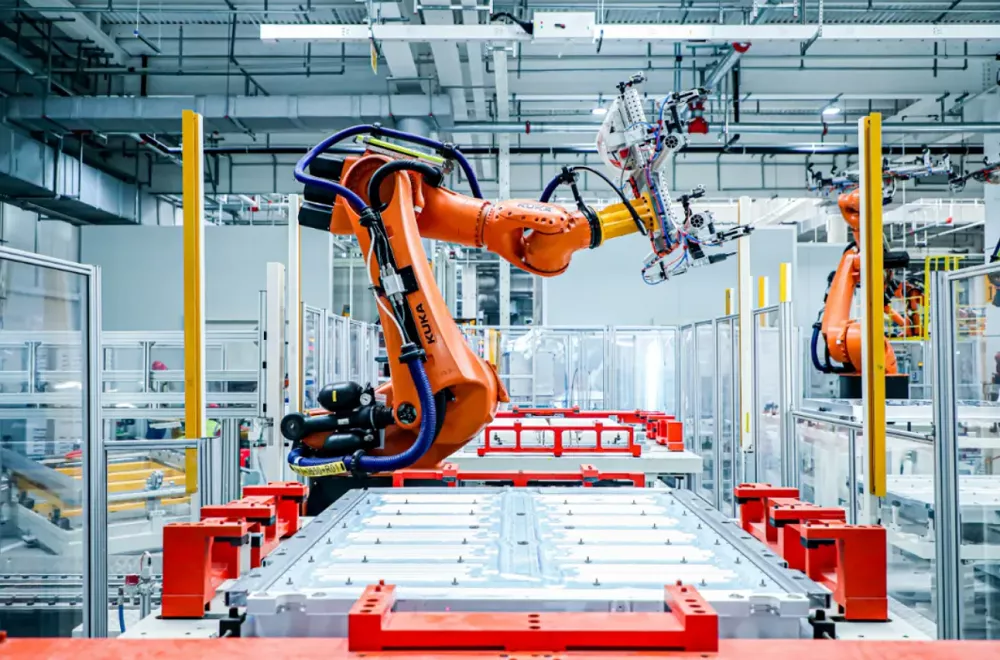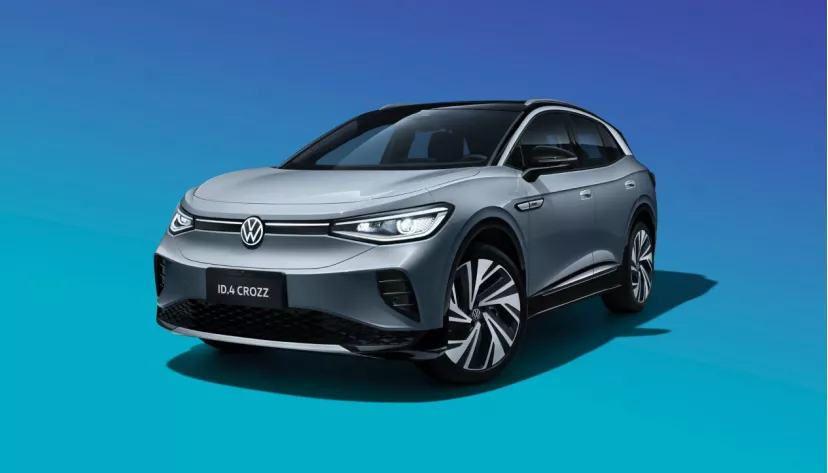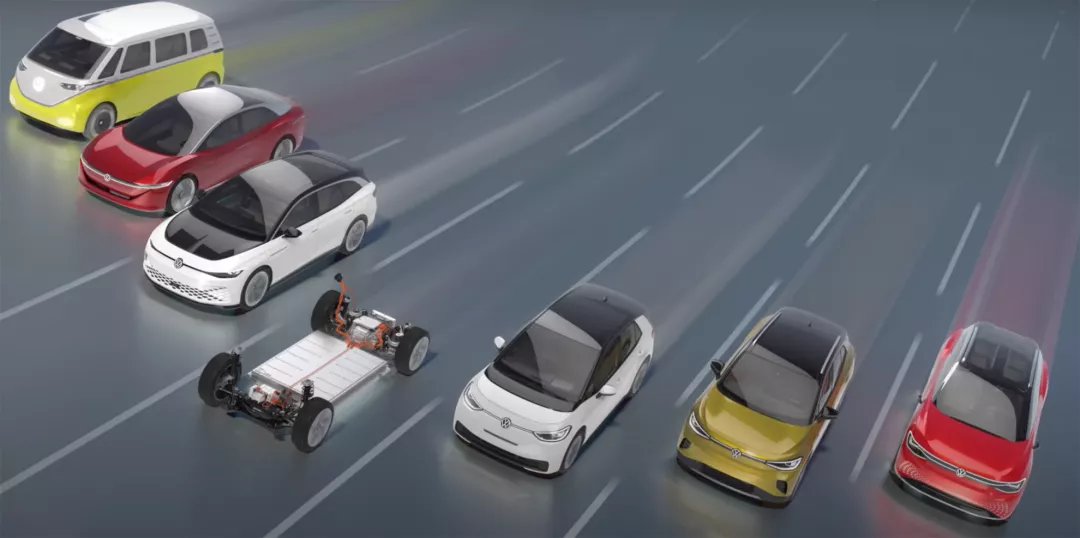On December 31st, 2019, the last day of the year, Volkswagen released a documentary called “The Last Mile | Beetle” to announce the discontinuation of the Beetle.
At the end of the video, as the Beetle flies into the distance, the phrase “where one road ends, another begins” appears on the screen, signifying the end of an era but also heralding the arrival of the Volkswagen ID. era.
Entering 2020, the first pure electric car in the Volkswagen ID. family, the ID.3, has been driving on European roads. A few months ago, the first long-range pure electric SUV, the ID.4, also made its global debut. And just yesterday, Volkswagen launched two pure electric compact SUVs specifically tailored for the Chinese market based on the ID.4 platform: the FAW-Volkswagen ID.4 CROZZ and SAIC-Volkswagen ID.4 X, which are now available for pre-order.
Thus, Volkswagen has launched a fierce offensive on China’s competitive new energy vehicle market.
At the two-hour long launch event, Dr. Stephan Wöllenstein didn’t use the same humorous and playful styling as Scott, the US Region CEO, did in the global debut of ID.4, but rather fluently and orderly summarized the design concept, driving range, and intelligent cockpit, etc. of ID.4 in Chinese, very practically.
It is very clear that the FAW-Volkswagen ID.4 CROZZ and SAIC-Volkswagen ID.4 X bear the responsibility of volume sales.
The NEDC range of ID.4 CROZZ and ID.4 X both exceed 550 km, and they can recharge to 80% in 45 minutes under 100 kW charging power. Overall, their performance is relatively average.As mentioned on-site, the energy-saving and comfortable system equipped on the ID.4 model could maximally control the energy consumption of air conditioning and seat heating, which makes the displayed range more realistic. We will further verify this point in subsequent practical tests.
In terms of intelligence, ID.4 breaks away from Volkswagen’s conservative style in the past and brings three mainstream technology configurations – AR HUD augmented reality heads-up display system, IQ.Drive intelligent lighting system, and ID.Light intelligent interactive breathing light.
The IQ.Drive intelligent lighting system achieves interaction between users and ID.4’s exterior to bring users a sense of exclusivity. When users approach the ID.4, the front headlights will “look up” and the rear taillights will light up one by one to indicate a welcome to the user.
The AR HUD augmented reality heads-up display system can project virtual instructions and animations onto the road ahead, thereby integrating driving and road information with reality. The specific information that can be displayed includes turn indicators during navigation, following distance, vehicle speed, and traffic signs, which compensates for the lack of visual experience on the 5.3-inch instrument screen.
The ID.Light intelligent interactive breathing light is a strip light located above the center console, which can respond to different user commands and provide more obvious visual feedback. For example, when the co-pilot wakes up the intelligent voice assistant, the light strip flashes on the co-pilot side. Moreover, when the navigation system prompts a left turn at the next intersection, the light strip will also blink in real-time.
In terms of exterior design, the ID.4 is derived from Tiguan but adopts a more youthful, luminous badge and a seamless design style. The side lines are graceful and powerful, and the tail is identifiable with the through-type taillights. ID.4 CROZZ fully retains the authentic German design, while ID.4 X has made subtle adjustments to the lower air intake grille that are more in line with Chinese consumer preferences. However, the aerodynamic drag coefficient of these two models has reached 0.28Cd, which is far higher than that of similar models in the same class.
Finally, let’s make a small summary. The ID.4 breaks the inherent perception of Volkswagen from the inside out with its “three screens and one belt” intelligent cockpit system composed of a 5.3-inch instrument screen, a 12-inch central control screen, AR HUD, as well as a youthful exterior design representing the electric age.
Three Invisible Advantages
If the selling points of the ID.4 are not enough to convince users to buy, then the three hidden advantages behind it could be considered as the “last straw that breaks the camel’s back”.
The first advantage is that the production capacity is sufficient, and users can pick up their cars anytime. According to previous reports, FAW-Volkswagen Foshan Plant and SAIC Volkswagen Anting Plant have officially started production in October this year, and the ID.4 is expected to be available at dealers in early next year. Moreover, the annual total production capacity of FAW-Volkswagen alone is as high as 600,000 units, which is an impossible dream for new car manufacturers.

The second advantage is the self-built charging network, which reduces user’s anxiety about charging. On one hand, Volkswagen and FAW-Jianghuai jointly established Kai Maixing New Energy Technology Co., Ltd. and announced that they will build a charging station network with one station every five kilometers in ten key cities by the end of 2021. On the other hand, Volkswagen is also cooperating with the start-up company Shanghai Dupu New Energy Technology Co., Ltd. and plans to produce flexible energy storage fast charging piles in China from the second half of this year.
It is clear that actively building a charging network in China is a solid step for Volkswagen in the rapidly developing Chinese electric vehicle market. At that time, all consumers can use Volkswagen’s APP to view the information of charging piles, and it will be available for Volkswagen car owners to experience one-stop convenience services, including free reservation, parking lock control, and plug-and-play.
The third advantage is the establishment of an exclusive website, which provides full-life-cycle services. Recently, Volkswagen launched the world’s first ID.3 offline experience store, located in the transparent factory in Dresden, to show its emphasis on user experience. Now, Volkswagen has specially created the ID. family of models exclusive mobile Internet platform for Chinese consumers – “Linking ID.”, coupled with its accumulated dealer system, consumers can get excellent car purchasing experience and guarantee services.
Analysis of ID.4 Competitiveness
Since introducing the North-South Volkswagen dual-car strategy in China, Volkswagen has never released sister models simultaneously, showing the weight of its expectations for the ID.4. Nevertheless, for the Chinese new energy market, the entry of the FAW-Volkswagen ID.4 CROZZ and the SAIC Volkswagen ID.4 X seems to be more like a heavyweight bomb, intensifying the already fierce competition.
At the 250,000 yuan price range of the ID.4, the second-tier electric vehicle manufacturers, such as Aiways, WM Motor, NIO, and Horizon, will be most affected since they have not differentiated themselves enough during the window of opportunity, and the price range is one of the most competitive amongst all EV SUVs in China. Therefore, their already struggling sales figures will be further squeezed by the full-scale assault from the Volkswagen ID.4.
In contrast, since the first-tier manufacturers, such as NIO and XPeng, have already established a distinctive brand, they will not be under much pressure in the face of the ID.4’s entry. Even though the XPeng P7 and the first sedan from NIO to be launched soon, both fall in this price range, NIO’s characteristic service experience and XPeng’s tech-savvy label are more attractive to customers than the ID.4.
What about the locally-produced Model 3 and the upcoming Model Y? Even with a conservative estimate, the locally-produced Model Y’s price will eventually fall into the 250,000 – 300,000 yuan range. Coupled with the success of the locally-produced Model 3, Chinese consumers who prefer SUV models will definitely also buy into the Model Y. Therefore, Tesla is the biggest competitor to the ID.4.
It is evident that Volkswagen does not have an advantage over Tesla in Tesla’s area of expertise such as autonomous driving, range, and acceleration experience. Despite mediocre performance in all aspects, ID.4 is sufficient for consumers since they trust that Volkswagen can continue to deliver the production control and services that they have accumulated over a long period of time.
Word of mouth leads to a surge in demand, which is Volkswagen’s most formidable aspect.

Currently, most of the population purchasing EVs are tech-savvy and a small portion of the younger consumer demographic, they naturally prefer unique brands such as Tesla. However, with the promotion of national policies, by 2025, the spread of new energy vehicles will have reached every household, and the era of electrification for everyone will not be too far away.By that time, electric vehicles are no longer a niche choice, and the huge consumer base spans all ages and classes, who will they choose?
Summary
Currently, Volkswagen Group has already expanded its electric product line in the Chinese market with Audi e-tron and Porsche Taycan, and the upcoming ID.4. With these products, Volkswagen Group has established its presence in the domestic electric car market.
By the end of 2023, Volkswagen hopes to introduce 8 ID. family products based on the MEB platform, providing Chinese users with more options for electric vehicles. Volkswagen hopes to become the first choice of Chinese users in the field of new energy and continue Volkswagen’s glory in the era of fuel cars.

Where one road ends, another begins.
Starting from ID.4, Volkswagen sounded the horn of traditional car companies’ counterattack in the era of electric cars.
Attached: More information about ID.4 collected from the entire network.
Scott Keogh, CEO of Volkswagen in the United States, said that the driving experience of ID.4 has the soul of Volkswagen GTI;
After 2021, dual-motor versions will be available, with a maximum power of 302 horsepower;
Volkswagen in the United States offers three years of free fast charging, but whether it is available in the Chinese market is currently unknown;
The dimensions of ID.4 CROZZ are 459218521629mm, and the wheelbase is 2765mm;
The dimensions of ID.4 X are 461218521640mm, and the wheelbase is 2765mm;
Although ID.4 is positioned as a compact SUV, the seating space tested by foreign media meets the standard of a mid-size SUV.
This article is a translation by ChatGPT of a Chinese report from 42HOW. If you have any questions about it, please email bd@42how.com.
